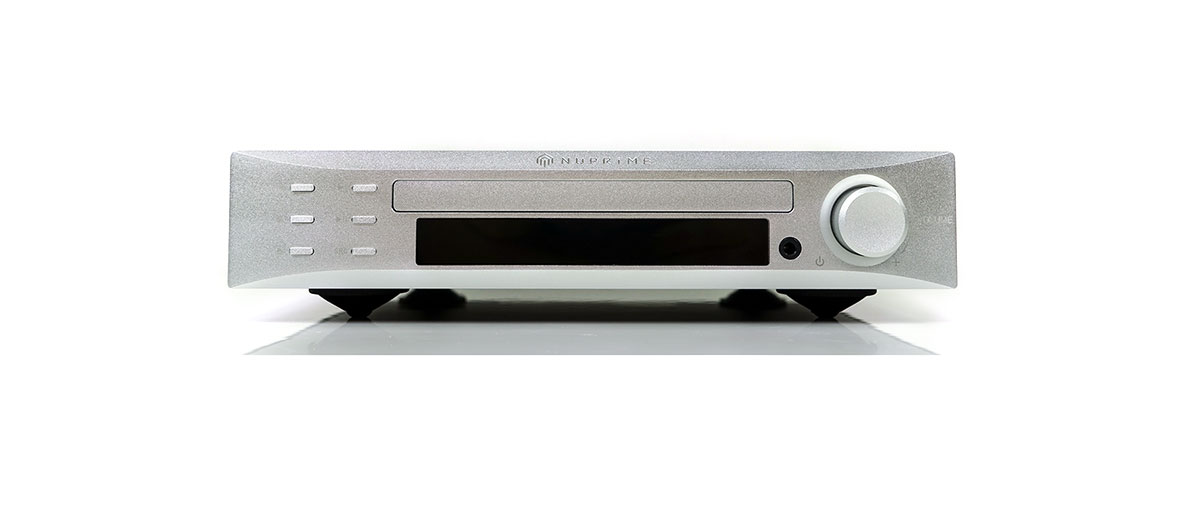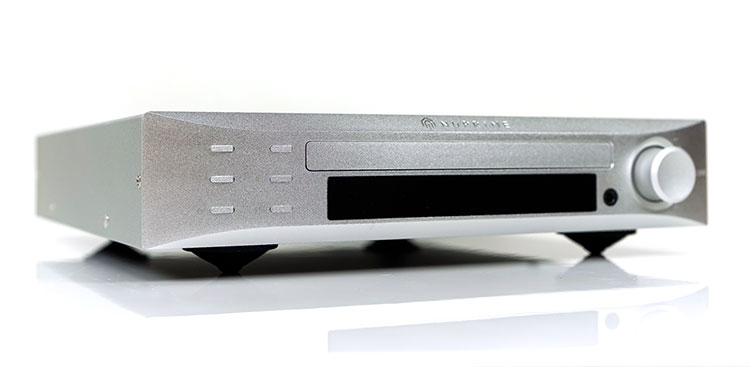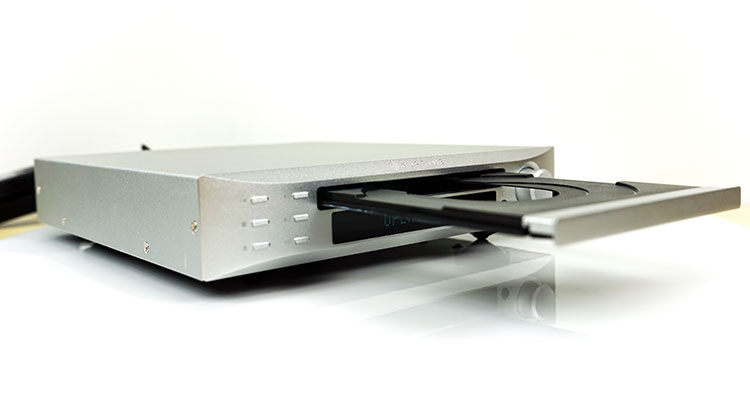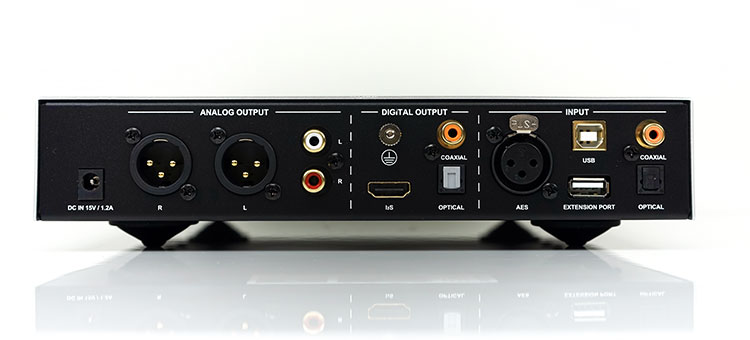The NuPrime CDP-9 is a high-end CD Player, DAC, and pre-amp. Priced at €1695.00 it is aimed for audiophiles who still enjoy physical formats.
Disclaimer: The NuPrime CDP-9 sent to us is a sample in exchange for our honest opinion and does not have to be returned. We thank the team at NuPrime for giving us this opportunity.
To read about other NuPrime products we have reviewed on Headfonics click here.
It is probably important to note right from the off that the review of the NuPrime CDP-9 will focus a little more on the DAC capabilities in a 2.1 or headphone setup rather than purely on the CD Player side.
I have had but two CD Players since the mid-90s, the Arcam CD72, and my current one, if you could call it that, the Meridian 506 20-BIT. Two excellent CD players I might add and the 506 was TOTL back in its day. I rarely upgrade when I find something I like.
It still works just fine which is a testimony to the build quality and parts inside that unit. From time to time I find myself looking for the CD72 in the local classifieds without much luck either. Those were the golden years of the CD.
The CDP-9 is priced in the same summit-fi zone as the Meridian once was (€1695). It is still fundamentally purposed as a CD Player but being 2018 and priced as it is the CDP-9 brings a lot more to the table than simply spinning 16BIT 44.1kd discs. This will definitely appeal to component system builders and digital source audiophiles also.
What Does It Do?
CD Playback
This is NuPrime’s flagship CD player and more feature packed than their mid-priced CDT-8 Pro (8-series). NuPrime has shared some features between the two such as using a Philips SAA7824HL laser and a single speed solution to minimize vibration and unbalanced disc playback.
Note, the CDP-9 will not decode SACD or other associated hi-res formats on disk. It is still a traditional CD Player in that respect though NuPrime touts its Red Book error correction capability. It also differentiates itself by delivering a lot more inputs and outputs with an internal DAC whereas the CDT-8 Pro is a pure transport.
Though the CDP-9 is primarily a physical format player it does throw in a number of interesting features to enhance the playback capability of CD’s and become more relevant to system builders.
ES9028PRO
The first is the use of the newer Sabre Es9028PRO DAC implementation. Whilst not a be all and end all statement it does raise the decoding capability significantly from 44.1kHz to 768kHz or DSD64 to DSD512.
Sample Rate Converter
The CDP-9 taps into that enhanced decoding capability by adding a sample rate converter via FPGA that will upsample to megahertz before converting into the target sample rate. So, for instance, a 44.1K CD can be upsampled to DSD512 or PCM 768KHz, as can a digital fed into the CDP-9 from another wired source.
Standalone DAC
It also means the CDP-9, combined with a range of inputs and outputs, can suffice as a standalone DAC for wired digital signal input from other sources such as your PC/MAC or streaming device. The sample rate converter feature can be equally applied to these files.
Amping
The CDP-9 will output to headphone albeit through a 3.5mm jack out at 150mW into 32Ω. I would not consider this to be the primary driver to buy the CDP-9 and those power ratings are more for IEM than planar. Of far more use will be the pre-amp capability of the CDP-9 which is something NuPrime have done a lot with their component systems such as the DAC-9 and DAC-10.
Build Quality
Form Factor
The CDP-9 form factor is much the same as the HPA-9 and the DAC-9. It is part of the 9-series after all so it has a slim modern and curved facia design to the front and a slightly boxier regular build to the rear. I would class the dimensions as mid to small sized for a component unit measuring in at 235 mm W x 281 mm D x 55 mm (including the feet).
If you do own the HPA-9 and DAC-9 it will stack on top of those two units and you can, like Cayin and their I-Series, build a compact but complete headphone and component system. Both of these have form factors and dimensions that are the exact same spec so you have no issues on any possible overhang.
Like the previous two 9-series units, the CDP-9 has four well-built shock absorbing feet on the base which I consider a must for any CD player, especially for stacking or close to any powerful speaker pairings. You do not want a TOTL unit skipping due to unwanted vibrations.
Tray Loader
The CDP-9 also uses an aluminum and plastic tray load system as opposed to a slot or top loading mechanism. It loads very smooth and straight though the plastics have a touch of wobble right at the last second when opening. I would also avoid placing any accidental pressure on the tray but that is just common sense for all tray loaders.
Mind you, I am a huge fan of excessively deep ‘drawer’ loading tray designs and one of the main reason why I still have the Meridian 506 today. The 506 drawer is not just a loader but the transport itself with a linear 3-beam pickup is a Foucault focus arrangement. Hence the depth is really required to keep everything super steady. The transport on the CDP-9 is static inside the main body hence the thinner tray mechanism as its only purpose is to load the CD.
Display
This is the first NuPrime component system we have reviewed with a true LCD type display with up to 12 individual LED clusters covering both alpha and numeric. Previously the DAC-9 and DAC-10 have used diode bulb configurations behind the main aluminum plating which are fine but this is a bit of step up. It is not angled like the Cayin iDAC-6 display but I found I didn’t have any viewing difficulties at extreme angles.
In some ways, it needed to be a step up with the multiple source options available and to be frank at this price point nothing less would do. For example, in CD playback, this is where the screen will cover the widest range of options and information. It will offer feedback such as playback mode, tracks and total time in CD player mode. It will also show information on scanning, forward, reverse, repeat and the actual playback mode such as shuffle or shuffle repeat.
Inputs & Outputs
The front is fairly clean in terms of inputs and outputs. In fact, just the one output which is a 3.5mm single-ended jack port for headphone and IEM use. The big input of course is the front slot loader which we have already covered. The rest are primarily physical controls. The majority of the connections are on the rear panel.
Outputs
The CDP-9 offers a wide variety of digital inputs and outputs as well as both balanced and unbalanced analog outputs. It does not offer any wireless or streaming functionality as stock such as you would find on the Cayin iDAP-6. However, it does offer the ability to plug in an optional service via an extension port on the rear. The analog output is via an XLR 3-pin balanced left/right connection and dual RCA unbalanced out so it can offer a true balanced output of up to 8Vrms and slot in with a reciprocal balanced analog amp.
The digital outputs include coaxial, optical and I2S. I2S has been around for a while and will work with a standard HDMI cable and is touted as having excellent jitter control. Traditional interfaces, such as S/PDIF, mix the clock and data signals and must go through an additional conversion process which increases jitter. Supposedly I2S will produce a much cleaner signal, especially at higher frequency levels.
However, you need a source with an I2S output device to receive the signal into the CDP-9. For example, the Cayin iDAP-6 streamer can connect with the CDP-9 via an I2S link-up. This will basically transport streaming into the CDP-9 DAC and support 8-32BIT audio sample rates.
Inputs
On the input side, you have an ABS/EBU balanced connection, USB, coaxial, optical and a single USB-A extension port. The extension port will allow you to stream via Bluetooth or WiFi if you have a USB-A female jack interfacing module. The USB will primarily interface with a PC/MAC for digital audio streams and likely to be the primary source if you have hi-res DSD. All connections have various sample rate capabilities as follows
- USB Sampling Rates: up to PCM 768KHz and 22.6MHz(DSD512)
- Coaxial Sampling Rates: up to PCM 768KHz and Dop256
- Optical Sampling Rates: up to PCM 192KHz and Dop64
Remote Control
Well, certainly it is an upgrade on the ‘stone age club’ design of the DAC-10H and more uniform in shape. However, it is still a bit of a tank, loud and clicky and you do have to unscrew the backplate to change the battery. I will give it props for it being incredibly sturdy (aluminum) and mechanical in nature but I am struggling to remember the last time I ever broke a remote control. Perhaps a slimmer design with quicker battery changing capability would fare better.
Aside from that it pretty much mirrors what can be done on the front fascia with tray operation and playback control for CDs. It will also allow you to select your desired source sample rate level, adjustor mute volume as well as selecting the desired source channel such as optical, USB or coaxial.
There is also a little “dis” button to flick between the various display information elements on the LED display such as volume level, disk status etc. In practice, I had little or no need to touch the front panel of the CDP-9 except when the clicking noise of the remote got a bit irritating.
Internal Hardware
DAC
Surprisingly NuPrime has not mentioned the DAC implementation in any great detail outside of the decoding and FPGA sampling rate prowess which, in fact, it is very good at. They should. It is a good DAC chipset, the Sabre ES9028PRO. This is a 32BIT 8-channel capable chipset with up to 129dB in dynamic range (DNR).
Whilst it is not an ES9038PRO, which I would have loved to have seen in the CDP-9, it is nevertheless a thoroughly modern DAC with excellent dynamic range capability.
I cannot account for every ES9028/38PRO implementation but the ones I have heard thus far have been a lot smoother and more detailed sounding than some older ES9018 infused units. The Oppo Sonica DAC was a very good example of just how much nicer the newer chips could sound in the right hands.
Amp
Headphone
The opamp designed headphone amp for me is more of a gentle bonus than a huge selling feature. It is no great shakes in terms of power at 150 mW @ 1 kHz into a 33Ω load. Certainly, nowhere near the level of their excellent DAC-10H integrated headphone DAC/amp for driving big cans.
It will, however, pair very impressively with IEMs, even efficient ones with low impedance and portable headphones below 32Ω. The CDP-9 headphone amp has a very quiet output stage with next to no noise or background hiss, excellent channel balancing and no low impedance skew.
Pre-amping
Pre-amping is excellent with up to 8Vrms output via the balanced connection and a very wide range of control via the CDP-9’s built-in volume dial using up to 100 steps in 0.5dB incremental. The CDP-9 uses an independent variable resistor-based volume system controlled by the ARM chipset microcontroller so it is very even and accurate. Call it a hybrid analog/digital system if you will.
I would encourage you to try balanced over single-ended for the superior voltage levels and much better gain levels on amps such as the Violectric V281. I found the V281 dial to be up much higher with unbalanced connections.
CD Playback
The CDP-9 uses a Philips SAA7824HL servo system and triple beam laser for CD playback which is then sent to an ARM chip LPC2103F CD for error correction. This is an all in one system for the drive, lens, and tracking.
This is a system I have seen in a few high-end systems such as the Shanling CD 3.2 and MHZS units. It is also the same servo unit used in the CDT-8 Pro and a quite a few mid-fi CD players from aforementioned brand names.
Click on Page 2 for Sound Impressions & Comparisons






